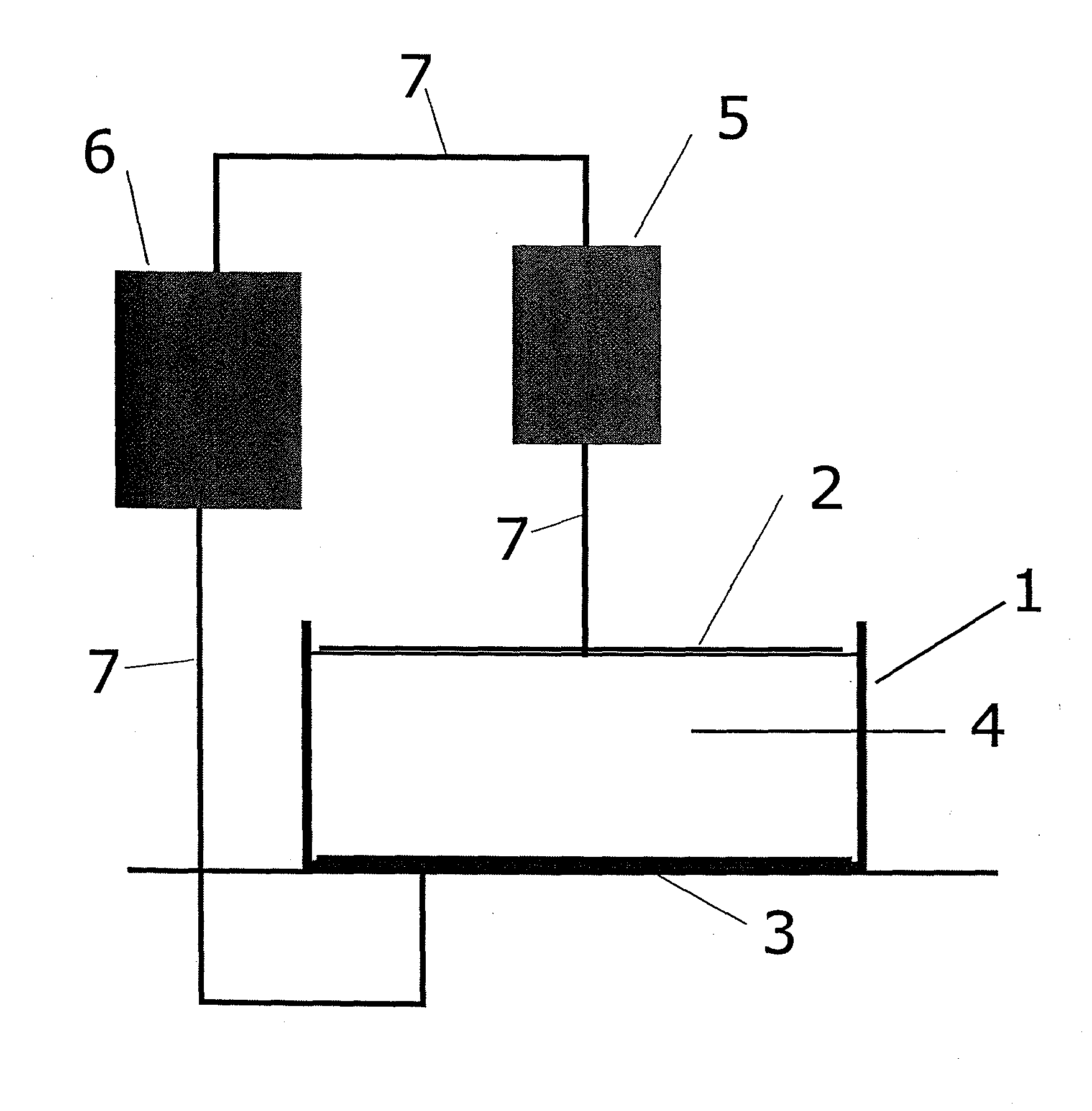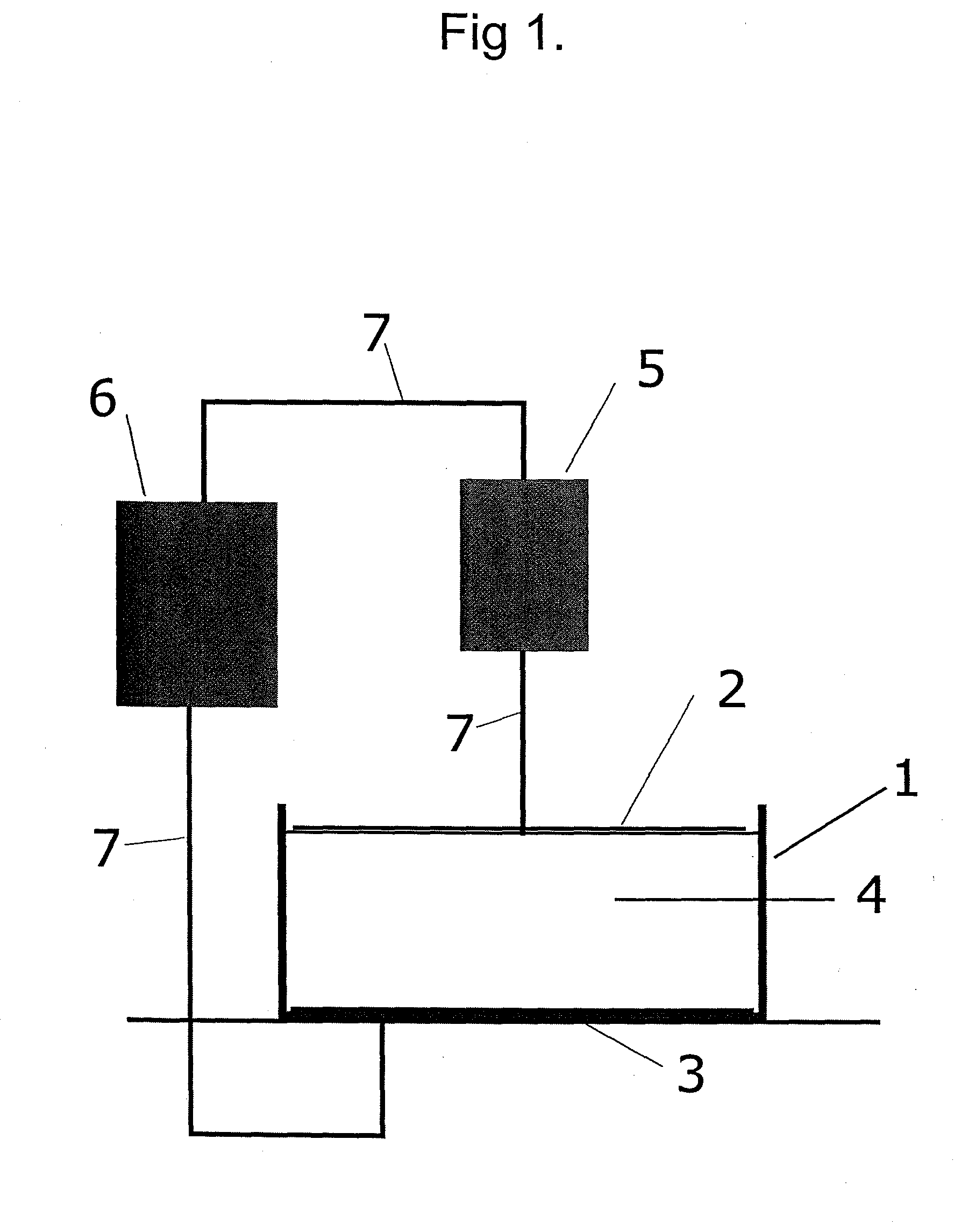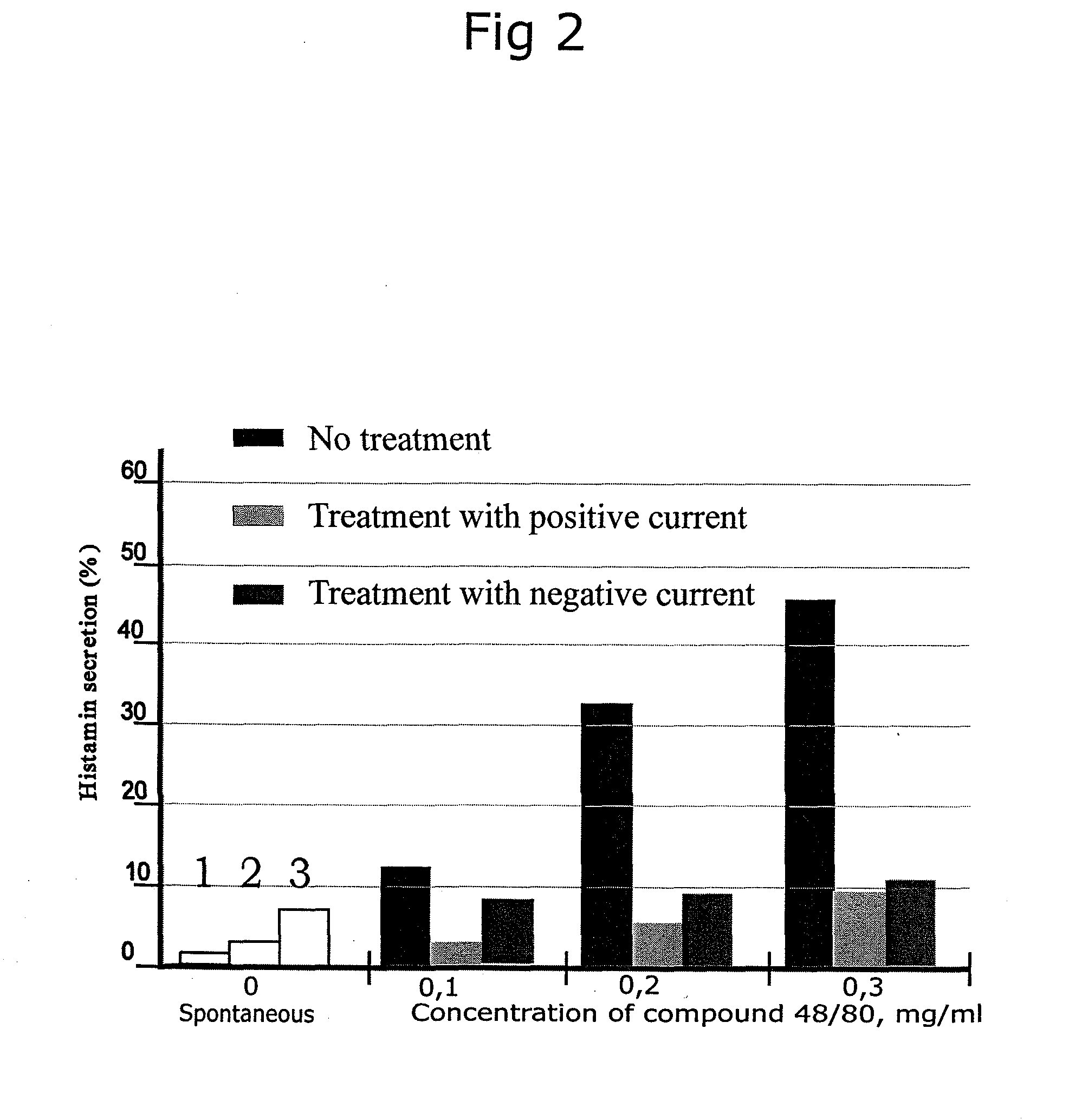Ionized gas for medical treatment
a technology of ionized gas and medical treatment, applied in the field of electrotherapy, can solve the problems of increased risk of infection, difficult control of dosage, and known pain for patients
- Summary
- Abstract
- Description
- Claims
- Application Information
AI Technical Summary
Benefits of technology
Problems solved by technology
Method used
Image
Examples
example 1
Model Experiment Investigation Cellular Reactions to ES
[0075]The optimal laboratory set up system for investigation of the reaction on cells by the use of ES could be as shown in FIG. 1.
[0076]1 is a glass container, 2 is a top electrode which is cowering the total area to be receiving the current, 3 is a bottom electrode cowering the total area of the bottom, 4 is the target to be treated, 5 is a current generator, 6 is a control system, 7 denotes electrical cables.
[0077]The fluid in insulating container 1 is a cell suspension containing mast cells.
[0078]Mast cells and basophilic granulocytes are involved in anaphylaxis (which can ultimately lead to anaphylactic shock), where considerable amounts of heparin and histamine are deposited in the blood. These, and other biologically active substances present in the granules of the mast cells and basophilic granulocytes are to some extent responsible for the symptoms found with asthmatic and type I allergic reactions.
[0079]During an asthm...
example 2
The Use of the Present Invention in Wound Healing
Rat Trial
[0098]A total number of 16 white healthy rats were each given a 20 mm×20 mm technical wound on the back. The rats were then separated randomly into two groups, a BLACK group and a RED group.
[0099]Each of the rats in group BLACK was given a black indication as a number from 1-8
[0100]Each of the rats in group RED was given a read indication as a number from 1-8.
[0101]Because all the rats were healthy, the healing time of the wounds were expected to be between 2 and 3 weeks.
[0102]The wounds were not covered or given any kind of saline.
[0103]By draw the BLACK group was elected to be treated with the treatment of the present invention for 45 minutes a day in 5 days. This was the only treatment this group received.
[0104]The RED group received no treatment at all.
Rats group BLACK treated with the method of the invention (general findings)Day 1369121518Wound isWound isWound isWound isWoundWounddry. Nodry andhealing.healinghealingalmo...
example 3
Using Ionized Gas Molecules to Treat Mast Cells
[0136]A system for delivering ionized gas molecules to a mast cell suspension is shown in FIG. 3.
[0137]In this figure, 1 is a glass container, 2 bottom electrode, 3 is the target to be treated, 4 is the gas ion transmitting device, 6 is a control system, 7 are conducting cables.
[0138]With the first series of experiments, the fluid in the insulating container was a cell suspension containing mast cells.
[0139]The purpose of these experiments was to see if mast cells react to treatment with ionized gas molecules in analogy to Example 1.
[0140]Both N2+ and O2− was dispensed over the suspension at a time interval varying from experiment to experiment, compound 48 / 80 was added to various concentrations, and the reactions of the mast cells in terms of histamine secretion were studied.
[0141]There was no doubt that the reaction of the mast cells depended on the current treatment, but the results were again rather variable.
[0142]If, for instance, ...
PUM
 Login to View More
Login to View More Abstract
Description
Claims
Application Information
 Login to View More
Login to View More - R&D
- Intellectual Property
- Life Sciences
- Materials
- Tech Scout
- Unparalleled Data Quality
- Higher Quality Content
- 60% Fewer Hallucinations
Browse by: Latest US Patents, China's latest patents, Technical Efficacy Thesaurus, Application Domain, Technology Topic, Popular Technical Reports.
© 2025 PatSnap. All rights reserved.Legal|Privacy policy|Modern Slavery Act Transparency Statement|Sitemap|About US| Contact US: help@patsnap.com



